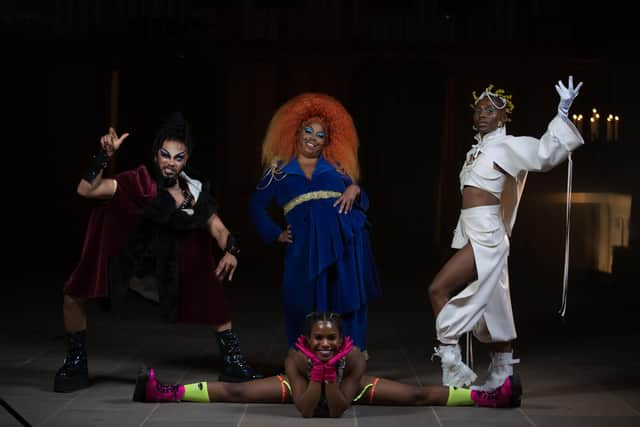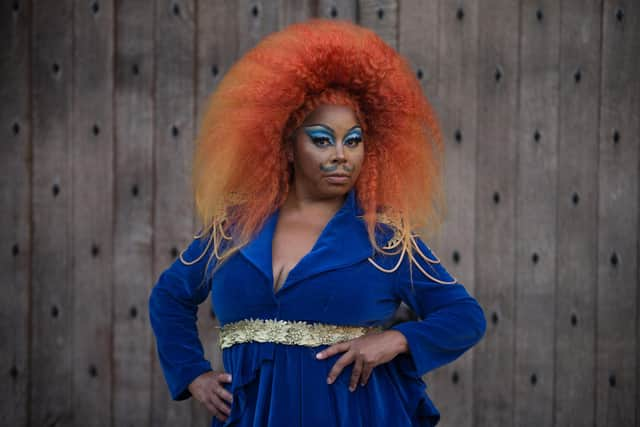Celebration of black performance filmed at Stirling Castle to honour little-known role in royal christening


But now the christening of the first child of King James VI of Scotland at Stirling Castle more than 400 years has inspired a new cultural project honouring “Scotland’s untold black history.”
Award-winning black performers are joining forces with cabaret and theatre producers to film sequences honouring the forgotten role of an African performer in the entertainment laid on in Stirling Castle's Great Hall in 1594 and his link to A Midsummer Night’s Dream.
Advertisement
Hide AdAdvertisement
Hide AdA moving image exhibition, OMOS, will go on display later this year at one of Edinburgh’s most prestigious cultural buildings, the Royal Scottish Academy on The Mound, after an initial run at the Dunoon Burgh Hall, in March and April.


Shakespeare is said to have come up with the line “Will not the ladies be afeard of the lion?” after reading detailed accounts of the celebrations, including abandoned elements, such as a plan to have a real-life lion pull a chariot into the Great Hall.
An unnamed African man, reputedly a servant of Anne of Denmark, James VI’s, was said to have appeared in a “silent comedy” sequence, giving the appearance of dragging the chariot along with golden chains.
Shakespeare’s play is said to have been first performed for a royal court audience in the late 1590s.
Billed as “a celebration of black performance in Scottish,” which both draws from the past and looks to the future, the film exhibition is a collaboration between cabaret performer Rhys Hollis, opera singer Andrea Baker, dancer Divine Tasinda and pole artist Kheanna Walker.


The project, which involves queer cabaret producers Pollyanna, filmed on location at Stirling Castle and Puck’s Glen, which is named after the mischievous fairy from Shakespeare’s play.
Hollis said: “OMOS explores the history of black people in Scotland.
Advertisement
Hide AdAdvertisement
Hide Ad"I hope it widens understanding of the role of black people in informing performance history in the UK.
"The event where a black person replaced a lion highlights the derogatory treatment of black bodies historically.


"This is paralleled in the way black actors are often cast in the theatre and the media today, presented as bestial or just through tokenism.
"I see this project as a form of taking back power by highlighting the black excellence of performers in Scotland.”
Baker said: “I hope to bring a new view of the history of black people in Scotland.
"We’ve been talking a lot about the slave narrative but we were members of the court, musicians and integral to building society.


“I will also be bringing my experience as a queer woman to the project.
Advertisement
Hide AdAdvertisement
Hide Ad"A lot of the black female singers in history identified as bisexual.
"These are women who lived their truths. I want to be part of this continued artistic discourse.”
Funded by the Creative Scotland and National Lottery Heritage Fund, OMOS has also been backed by Historic Environment Scotland, which runs Stirling Castle.
Laura Mackenzie-Stuart, head of theatre at Creative Scotland, said: “Projects that tell black, Scotland-based stories are still too much a rarity. OMOS combines the opportunity to reveal aspects of this history and to shine a light on a little known Scottish connection with one of Shakespeare's best-known plays.”
Comments
Want to join the conversation? Please or to comment on this article.
